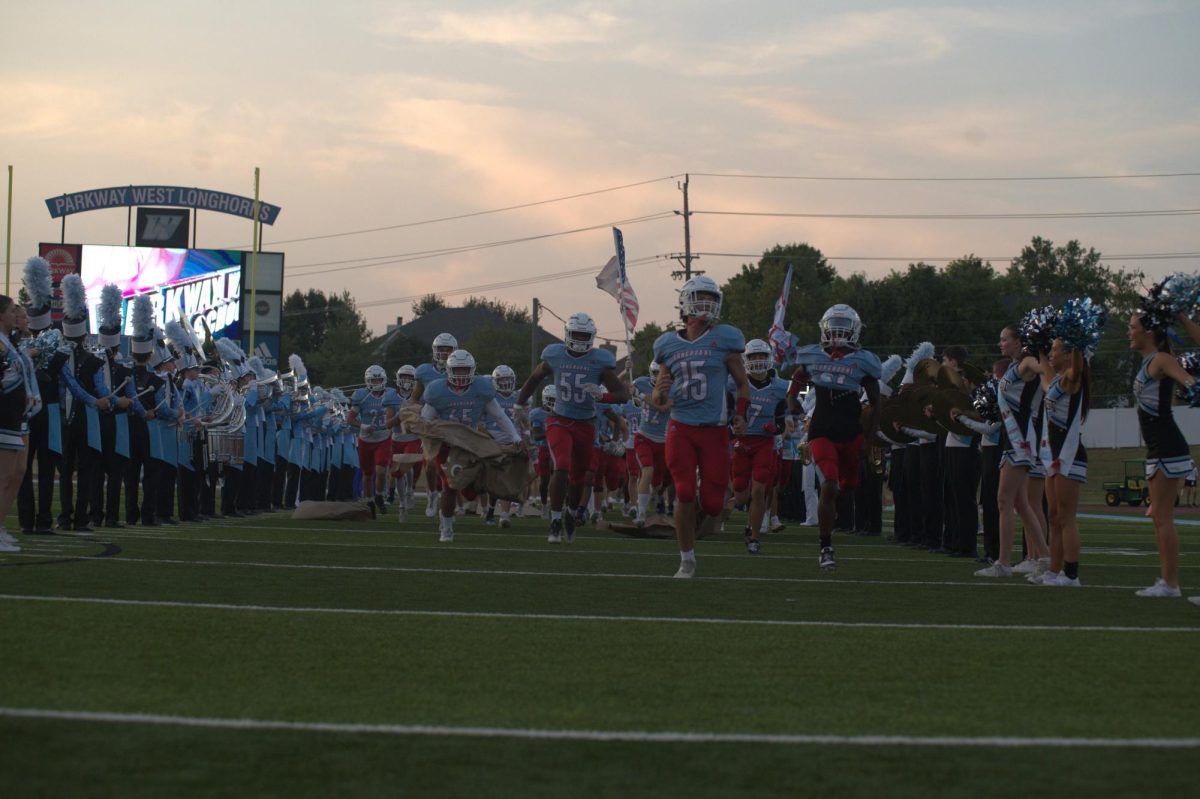According to College Board, the average student spends a mean of $22,958 on out-of-state public colleges, or $9,139 on in-state tuition. Though in-state tuition is significantly less than out-of-state tuition, some students still struggle with costs, which can often lead to debts.
For students that fit the financial criteria, there are options of tuition-free education. The following are open to students living outside of the collegeŌĆÖs districts:
┬ĀCollege of the Ozarks
This is a college located in Point Lookout, MO, that provides students with the option to earn their education through their on-campus labor.
At College of the Ozarks, students are required to work 15 hours per week. They are also required to have two weeks with 40 hours of work, which is scheduled when classes are not in session. The hours that a students works goes towards paying their school tuition. Additionally, there is a Summer Work Program, where students have the opportunity to work in the summer before the term begins. The summer hours are applied toward room and board charges for the upcoming year.
On-campus jobs offered at College of the Ozarks range from agriculture, nursing, construction, communications and more. In total, there are over 80 work stations where students are employed. Rather than choosing their job station, students are assigned their jobs during a school sponsored program called a Character Camp.
Like off-campus jobs, students are permitted to request off holidays and sick days. If a student chooses to do so, they are responsible for arranging makeup hours with their work station supervisors.
Not only can students earn grades on their education, but College of the Ozarks files work performance grades alongside a studentŌĆÖs academic grades, giving students the opportunity to show a record of credentials to future employers outside of college.
Students interested in more information about College of the Ozarks should visit their website, here.
Berea College
Located in Berea, KY, students work in exchange for their tuition. Unlike College of the Ozarks, Berea requires their students to have a minimum of 10 hours a week at approved campus departments.
Berea offers over 130 departments for students to work in. Whether students may chose their work field or not depends on the studentŌĆÖs past academic performance.
Job opportunities on campus vary widely and opportunities change year to year.
Students receive the opportunity to participate in over 70 school-sponsored organizations, which students may chose to volunteer at alongside their on-campus jobs.
Students looking for more information about Berea should visit their website, here.
Deep Springs College
Though it may not be an Agricultural college, Deep Springs, located in Big Pine, CA, students play a large role on the on-campus ranch and farms.
Deep Springs provides education in exchange for farm labor. Each year, the college farm produces 152 acres of alfalfa hay. The college began their tuition-free program with alfalfa farming, but later expanded with nearly 15 possible positions. (List of possible jobs here).
Each term, students are assigned new labor positions, ranging from tasks such as dish washing, to farming alfalfa or herding cattle. Within the term, students must meet the minimum of 20 required hours of work.
Once a term has ended, students receive the opportunity to submit a list of preferred assignments for their next labor assignment for the upcoming term.
Though students get to chose their positions, it is required that all students work jobs within the boarding homes for at least two terms of the academic year.
Some on-campus jobs are longer than one term, such as farm hands and gardeners. Other jobs can even require students to work over the summer.
Through their labor, students earn all of their required supplies, along with room and board, as long as the minimum of hours is met.
Students looking for more information on Deep Springs should visit their website, here.
┬ĀStudents are chosen to receive these college opportunities based on their financial need, as these programs are in place for students unable to pay for tuition fees. Whether or not a student fits this criteria is according to their completed Free Application for Federal student aid (FAFSA) form online. By filling out a FAFSA, students can highlight their necessity for financial assistance when applying colleges listed above, and other colleges within the program. To fill out a FAFSA and discover more information, visit their website here.


![Gazing up from the stage, junior Joseph McCurdy who played Peter Pan in the school play, Lost Girl, sits next to senior Juliana Rogers, who plays Wendy Darling, during a theater rehearsal. McCurdyŌĆÖs passion for theater began when he observed a West High production in middle school. ŌĆ£I've been in the high school theater program since I was a freshman. I've always loved theater, but [what prompted me to join] was [when] I went to see [a performance here] when I was in middle school, and it was super cool,ŌĆØ McCurdy said.](https://pwestpathfinder.com/wp-content/uploads/2025/11/IMG_6535-1200x798.jpeg)

![Standing tall, stacked in a precise formation, the cheer team strikes a signature pose during halftime on Sept. 12 at the varsity football game. Nearly a month after this performance, the cheer team performed at the Missouri Cheerleading Coaches Association (MCCA) regional competition on Oct. 4, 2025. ŌĆ£We've all come [to] work together a lot more,ŌĆØ sophomore Elyssa Philippi said. ŌĆ£We're a lot closer than we were [earlier in the season] and going to state has made us closer [in] trying to work with each other, learn [new] skills and make our team better.ŌĆØ](https://pwestpathfinder.com/wp-content/uploads/2025/11/DSC5139-1.jpg)
![Handing out candy to excited trunk-or-treaters, President of the United Nations ChildrenŌĆÖs Fund club and junior Sara Ashok represents that group. Ashok was eager to participate in this event for multiple reasons. ŌĆ£I really wanted to be a part of the event because I get to help create memories for kids and spend time with my friends, spreading the things [I'm passionate about],ŌĆØ Ashok said.](https://pwestpathfinder.com/wp-content/uploads/2025/11/DSC_8648-1-1200x800.jpg)

![Smiling in a sea of Longhorns, Fox 2 reporter Ty Hawkins joins junior Darren Young during the morning Oct. 3 pep rally. The last time West was featured in this segment was 2011. ŌĆ£[I hope people see this and think] if you come to [Parkway] West, you will have the time of your life because there are so many fun activities to do that make it feel like you belong here. I was surprised so many people attended, but it was a lot of fun,ŌĆØ Young said.](https://pwestpathfinder.com/wp-content/uploads/2025/10/Edited2-1200x798.jpg)
![West High seniors and families listen as a representative of The Scholarship Foundation of St. Louis, Teresa Steinkamp, leads a Free Application for Federal Student Aid (FAFSA) workshop. This session, held in the library, provided guidance on financial aid, scholarships and student loan options. ŌĆ£This event is very beneficial for any seniors who are applying to or considering applying to colleges after high school [because] the cost of college is on the rise for seniors and parents,ŌĆØ college and career counselor Chris Lorenz said.](https://pwestpathfinder.com/wp-content/uploads/2025/09/DSC_4478-1200x778.jpg)
![Senior Kamori Berry walks across the field during halftime at the Homecoming football game on Sept. 12. During the pep assembly earlier that day, she was pronounced Homecoming Queen. ŌĆ£I thought it was nice that the crowd [started] cheering right away. I know [my friends] were really excited for me, and my family was happy because typically non-white people don't win,ŌĆØ Berry said.](https://pwestpathfinder.com/wp-content/uploads/2025/09/DSC7046-Enhanced-NR-1200x798.jpg)



![Sophomore Shree Sikkal Kumar serves the ball across the court in a match against Lindbergh. Sikkal Kumar has been a varsity member of the varsity girlsŌĆÖ tennis team for two years, helping her earn the number two rank in Class 2 District 2.ŌĆ£When matches are close, itŌĆÖs easy to get nervous, but I [ground] myself by[staying] confident and ready to play,ŌĆØ Sikkal Kumar said.](https://pwestpathfinder.com/wp-content/uploads/2025/11/DSC2801-1200x798.jpg)
![Dressed up as the varsity girlsŌĆÖ tennis coach Katelyn Arenos, senior Kate Johnson and junior Mireya David hand out candy at West HighŌĆÖs annual trunk or treat event. This year, the trunk or treat was moved inside as a result of adverse weather. ŌĆ£As a senior, I care less about Halloween now. Teachers will bring their kids and families [to WestŌĆÖs Trunk or Treat], but there were fewer [this year] because they just thought it was canceled [due to the] rain. [With] Halloween, I think you care less the older you get,ŌĆØ Johnson said.](https://pwestpathfinder.com/wp-content/uploads/2025/10/DSC00892-1-1200x800.jpg)
![Focused on providing exceptional service, sophomore Darsh Mahapatra carefully cleans the door of a customerŌĆÖs car. Mahapatra has always believed his customers deserve nothing less than the best. ŌĆ£[If] theyŌĆÖre trusting us with their car and our service, then I am convinced that they deserve our 100 percent effort and beyond,ŌĆØ Mahapatra said.](https://pwestpathfinder.com/wp-content/uploads/2025/10/DSC_0018-1200x800.jpg)
![Sophomore Aleix Pi de Cabanyes Navarro (left) finishes up a soccer game while junior Ava Muench (right) warms up for cross country practice. The two came to Parkway West High School as exchange students for the 2025-2026 school year. ŌĆ£The goal for the [exchange] program is to provide opportunities for both Parkway students and our international exchange students to learn about other cultures, build connections and become confident, capable, curious and caring ŌĆö ParkwayŌĆÖs Four CŌĆÖs ŌĆö in the process,ŌĆØ Exchange Program Lead Lauren Farrelly said.](https://pwestpathfinder.com/wp-content/uploads/2025/10/Feature-Photo-1200x800.png)
![Leaning on the podium, superintendent Melissa Schneider speaks to Parkway journalism students during a press conference. Schneider joined Parkway in July after working in the Thompson School District in Colorado. ŌĆ£My plan [to bond with students] is to get things on my calendar as much as possible. For example, being in [classes] is very special to me. I am trying to be opportunistic [meeting] kids [and] being in [the school] buildings. I have all the sports schedules and the fine arts schedules on my calendar, so that when I'm available, I can get to them,ŌĆØ Schneider said.](https://pwestpathfinder.com/wp-content/uploads/2025/09/IMG_5425-1200x943.jpeg)
![Gazing across the stage, sophomore Alexis Monteleone performs in the school theater. The Monteleone familyŌĆÖs band ŌĆ£Monte and the MachineŌĆØ has been releasing music since 2012, but Alexis started her own solo career in 2024 with the release of her first single, Crying Skies. ŌĆ£My whole family is very musical, [and I especially] love writing [songs with them],ŌĆØ Monteleone said.](https://pwestpathfinder.com/wp-content/uploads/2025/09/DSC7463-1200x798.jpg)
![Leaping through the air, senior Tyler Watts celebrates his first goal of the season, which put the Longhorns up 1-0 against the Lafayette Lancers. Watts decided to play soccer for West for his last year of high school and secured a spot on the varsity roster. ŌĆ£[Playing soccer for West] is something I had always dreamed of, but hadnŌĆÖt really had a good opportunity to do until now. ItŌĆÖs [really] fun being out [on the field], and IŌĆÖm glad I decided to join the team. ItŌĆÖs just all about having fun with the boys and enjoying what time we have left together,ŌĆØ Watts said.](https://pwestpathfinder.com/wp-content/uploads/2025/09/DSC_1951-1200x855.jpg)

![Shifting global trade, President Donald TrumpŌĆÖs tariffs are raising concerns about economic stability for the U.S. and other countries alike. ŌĆ£[The tariffs are] going to pose a distinct challenge to the U.S. economy and a challenge to the global economy on the whole because it's going to greatly upset who trades with who and where resources and products are going to come from,ŌĆØ social studies teacher Melvin Trotier said.](https://pwestpathfinder.com/wp-content/uploads/2025/05/MDB_3456-1200x800.jpg)
